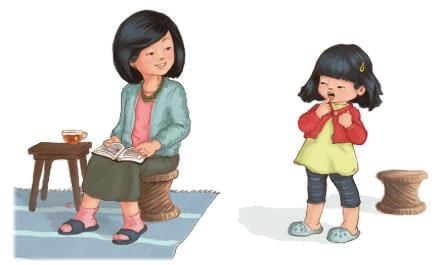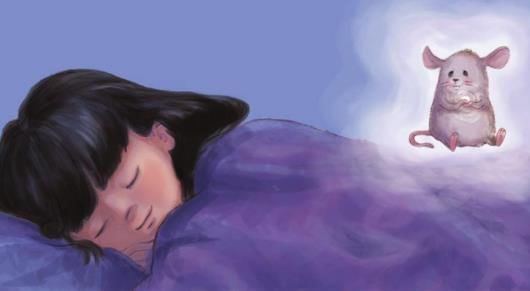The Very Wiggly Tooth Chapter Notes | English Class 1 ICSE PDF Download
| Table of contents |

|
| Introduction |

|
| Key Points |

|
| Explanation |

|
| Message |

|
Introduction
This chapter is about a girl named Bunu who finds her first loose tooth. She feels happy but also a little scared. The story shows how she tries to remove it and learns to wait. It also includes a fun part where you circle faces to show how you feel if a tooth falls out, like happy, sad, or surprised.

Key Points
- Bunu tells her mom about her wiggly tooth and feels excited but scared.
- Mom says to push it with her tongue and wait for it to fall out.
- Bunu tells her dad, who checks it and says to wait too.
- Bunu tries tying a string to her tooth and door but gets tired and stops.
- Her sister Chunnu offers to pull the string, but it hurts, and they stop.
- Mom tells a story about throwing teeth on the roof for a mouse named Musa.
- Bunu dreams of Musa with a shiny tooth and wakes up to find her tooth gone.
- She finds the tooth, throws it on the roof, and asks Musa for a new one.
Explanation
One day Bunu tells her mom about her first loose tooth, feeling happy yet scared. Mom suggests pushing it with her tongue, but it doesn’t fall, so she advises waiting.


Dad checks it gently and agrees to wait. Impatient, Bunu ties a string to her tooth and door, but after waiting, she sighs and stops. Chunnu tries to pull the string, but it hurts, so they wait again.

Mom shares an old tale about asking Musa, a mouse, for a strong tooth by throwing the old one on the roof. Bunu dreams of Musa with a shiny tooth, wakes up, finds her tooth gone, sees it by her pillow, and throws it on the roof asking for a new one.

Message
The story teaches that waiting is better for loose teeth to fall out naturally. It also shows a fun old custom of asking a mouse for a new tooth.New Words with Meanings
- Wiggly: Moving up and down or side to side quickly.
- Excited: Feeling very happy.
- Gently: Doing something softly.
- Sigh: A loud breath when sad or tired.
- Terrible: Very bad.
- Screams: A loud cry.
- Musa: A pretend mouse.
- Gleaming: Shining brightly.
- Dashes: Runs fast.
FAQs on The Very Wiggly Tooth Chapter Notes - English Class 1 ICSE
| 1. What should I do if my tooth feels wiggly? |  |
| 2. Why do teeth become wiggly? |  |
| 3. How can I help a loose tooth come out naturally? |  |
| 4. What are the signs that a wiggly tooth needs professional attention? |  |
| 5. Can a loose tooth be saved? |  |















